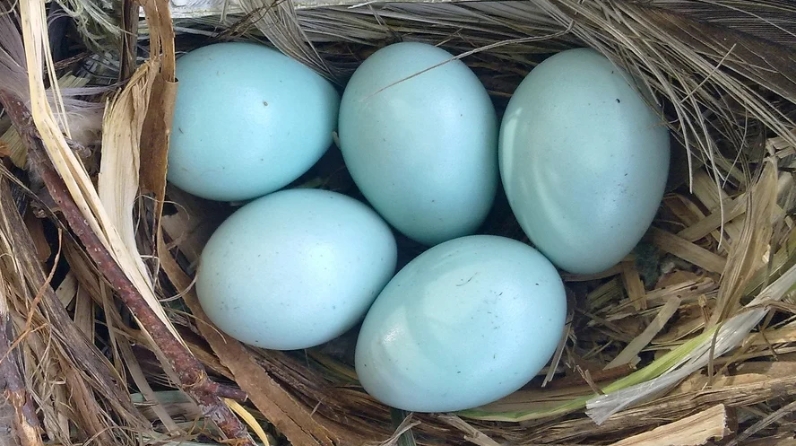In the Muslyumovsky district hens lay blue and green eggs

It’s Easter this Sunday, great holiday for all Orthodox. And to be more precise, the whole nation. When you live for years on the same street - Russians, Tatars, Chuvashs, Udmurts, etc., then you experience both joy and sorrow together.
It is not difficult to guess the arrival of Easter - there are Easter cakes and colored eggs at the table. Full pots of colored eggs! Just in case. If you forgot to stock up on sweets, colored eggs as a gift are a win-win option.
But Maryam Salamaeva from the village of Muslyumovo does not have to bother buying dyes and dyeing eggs. Such eggs - with green and light blue shells - are laid by her own hens. She has 16 laying hens with a rooster, and 5 crested animals daily delight the hostess with colored eggs.
“We feed our pestles as usual: boiled potatoes, steamed grain crushers, they like cottage cheese and milk,” says Maryam. - Therefore, colored eggs are not the result of some special diet, but the characteristics of the breed.
Maryam does not know what breed of her hens is, because they were presented to her by relatives from the village of Starye Erykly of the Tukaevsky district. Anyway, relatives willingly pick up colored gift eggs. And not only for the Easter eve.
“My nine-year-old granddaughter Zarina likes them very much,” laughs Maryam, “she digs up worms for chickens in the garden.”
Maryam and her daughter live in their house, they have 10 acres of land and a farmstead, where Maryam has always kept birds. In summer there are geese and broilers, but chickens are her year-round concern. Caring and appendage to the dining table. Including in the form of colored eggs.
For reference:
The rarest hens that lay blue and green eggs are hens of the Ameraukan breed. High productivity and wonderful taste of meat made this chicken quite popular. Ameraukana is a breed also called otherwise - Easter Chicken.
Its origin is American. Hence the name of the breed.
The birds have widely spaced legs, small oval-shaped lobes, a short tail, large wings and a strong curved beak, they are also called catkins. The comb resembles beads, begins at the beak and ends at the top of the head.
Easter chicken has a variety of colors. 8 colors of plumage are officially registered: white, black, blue, red-brown, silver, wheat, dark yellow and blue with a wheat tint. However, there are other colors, such as lavender. In addition to the main, in nature there are decorative and dwarf species.
Average productivity - 2 years. According to statistics, on average this type of chickens lays from 200 to 250 eggs of different colors per year. In addition, these birds have a good quality meat, with a very delicate taste, which is reminds of quail. A chicken weighs from 2 to 2.5 kg, and a rooster can gain up to 3.5 kg. True, the instinct of incubation of Ameraukan breed is not very well developed.
Due to its good climate adaptation, caring for a bird of the Ameraukan breed is quite simple, moreover, this breed does not have any diseases. In feeding, this living creature is not particularly whimsical. But it is worth noting that these hens love and need only clean water. You can not drink directly from the water supply. Water needs to be purified. Also, don’t forget about the warmth and walks Easter chickens need as well.